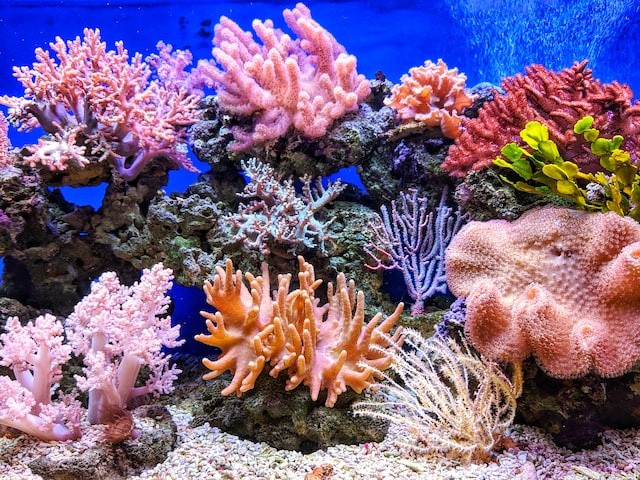Finding a new supply of underwater caffeine was only a perk of a recent study looking at the effects of chemicals released into the sea by corals.
Coral chemical compounds on structure and health of reefs

According to the study, coral species differ greatly in their production of organic chemical compounds known as metabolites or exudates, and these compounds have varied effects on the compositions and abundances of reef microorganisms, as per Sciencedaily.
The paper led by authors from Woods Hole Oceanographic Institution (WHOI), Benthic exometabolites as well as their ecological relevance on threatened Caribbean coral reefs, published in ISME Communications, the study emphasizes the exudates released from numerous stony corals, octocorals, and an invasive alga as a means of illustrating the significance of benthic exudates for constructing microbial communities on oligotrophic reefs.
Here is how caffeine is related. To conduct the study, scientists used specimens from the Virgin Islands National Park, including stony corals, octocorals, and an invasive encrusting alga known as Ramicrusta textilis, to collect exudates from six species of Caribbean benthic animals. Surprisingly, the researchers discovered that high levels of caffeine were released by R. textilis.
The study's findings further show that benthic creature exudates contribute to the complex pool of extracellular metabolites within reef waters and that exudate composition varies greatly by species.
As to why R. Textilis The paper states that although the production of caffeine by marine species has not received much attention, it is a frequent metabolite generated by land plants generally to fend off herbivores and pathogenic microorganisms.
According to co-author Elizabeth Kujawinski, this discovery represents a significant advancement in the identification of chemical signals that could aid scientists in determining the health of coral reefs.
The chemical signals inside a reef ecosystem are closely related to the functioning of the symbiotic relationships within reefs, much like human health diagnostics.
Mortality status of Coral
The three-dimensional structure and habitat for other reefs are provided by corals, which are the main builders of the reef, as per AGRRA.
Corals are exceptional in that they may sustain partial tissue death while continuing to exist. Corals are subjected to disturbances as they develop, which might result in some of the colony dying while the remainder is still alive.
Corals are amazingly capable of repairing small areas of tissue loss with new tissue, but if the extent or severity of mortality is too great, the dead skeleton sections will eventually get overtaken by algae or other bioeroding organisms.
Corals with healthy tissues show little evidence of injury. Small corals frequently exhibit very little or no partial mortality.
Recent coral mortality is the term used to describe situations where a coral's tissue has recently perished but the corallite skeletal structure beneath is still discernible and recognizable to species. There is white recent new mortality.
Old mortality is the term used to describe any dead coral tissue wherein the corallite structures have either disappeared or have been completely covered by difficult-to-remove organisms. The soft tissues of the coral most likely perished over the previous months, years, or decades.
Standing dead colonies are those that are entirely or completely dead and can be identified at a general level based on colony form or corallite type. Even if a coral is completely dead, it still serves as a crucial habitat for those other reef animals.
© 2025 NatureWorldNews.com All rights reserved. Do not reproduce without permission.




